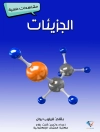New genomic information has revealed the crucial role that protein–protein interactions (PPIs) play in regulating numerous cellular functions. Aberrant forms of these interactions are common in numerous diseases and thus PPIs have emerged as a vast class of critical drug targets. Despite the importance of PPIs in biology, it has been extremely challenging to convert targets into therapeutics and targeting PPIs had long been considered a very difficult task. However, over the past decade the field has advanced with increasing growth in the number of successful PPI regulators. Protein–Protein Interaction Regulators surveys the latest advances in the structural understanding of PPIs as well as recent developments in modulator discovery.
สารบัญ
Introduction; Protein-protein interaction interfaces and their functional implications; Protein-Protein interaction networks in human disease; High Throughput Screening Methods for PPI inhibitor discovery; Computational structural modeling to discover PPI modulators; Small molecule inhibitors of E3 ubiquitin ligases; Hydrogen bond surrogate stabilized helices as Protein-Protein interaction inhibitors; Helix-mimetics as Protein-Protein Interaction Inhibitors; Discovery and Development of Mcl-1 Inhibitors as Anti-cancer Therapeutics: Hit to Clinical Candidate Optimization; Pharmacological Regulation and Functional Significance of Chromatin Binding by BET Tandem Bromodomains; Small-molecule modulators of Protein-Protein Interactions: focus on 14-3-3 PPIs; Discovery of AMG 232, a small molecule MDM2 inhibitor in clinical development and its back-up clinical candidate, AM-7209; Small Molecule Inhibitors of Myc-Max Interaction and DNA Binding; Small Molecule Modulators of Endo-Lysosomal Toll-Like Receptors












